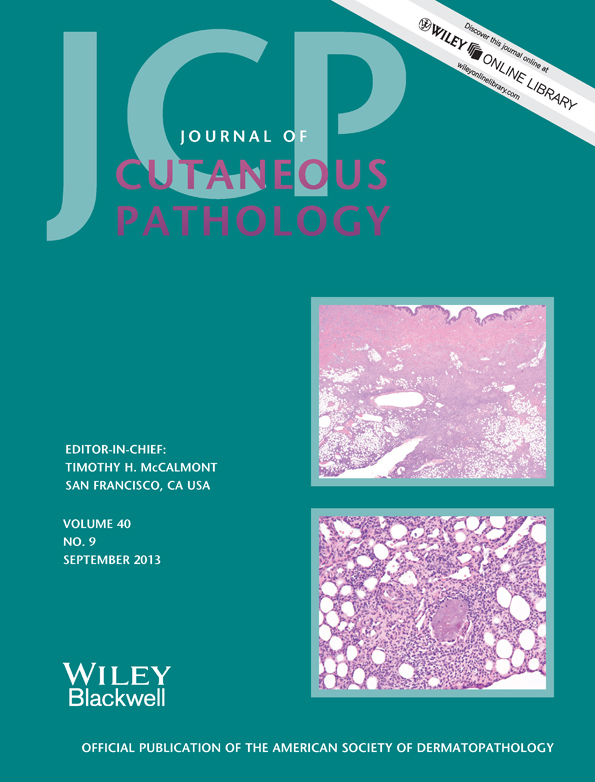Pseudolymphomatous cutaneous angiosarcoma: a report of 2 new cases arising in an unusual setting
Abstract
Pseudolymphomatous cutaneous angiosarcoma represents a rare, relatively new variant of cutaneous angiosarcoma exhibiting a prominent inflammatory lymphoid infiltrate that can mask the underlying vascular malignant proliferation and mimic a lymphomatous or pseudolymphomatous process. We describe the clinicopathologic characteristics of two new cases of pseudolymphomatous cutaneous angiosarcoma whose originality lies in the unusual setting from which they have arisen. In fact, the first case was an exceedingly lymphocyte-rich recurrence of a typical epithelioid cutaneous angiosarcoma whose primary lesion that was almost devoid of inflammatory infiltrate underwent surgical excision and radiotherapy while the second one was an unexpected histopathological finding associated with a basal cell carcinoma. Immunohistochemically, most of the lymphocytes expressed immunoreactivity for T-cell markers, while the neoplastic endothelial lymphatic cells expressed CD31 and CD34. D2-40 immunoreactivity was observed lining some channels and some neoplastic cells. In the first case a possible relationship between radiotherapy and the pseudolymphomatous reactive pattern is discussed while the second case has been considered as a rare example of collision tumor.




